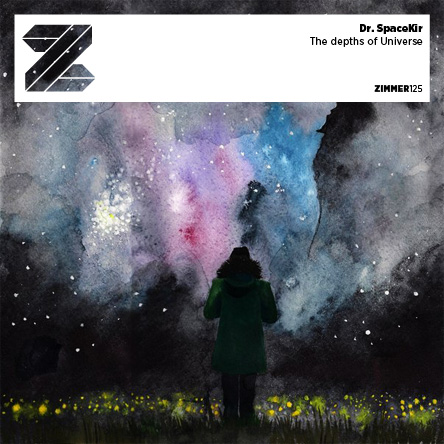Zimmer125 – Dr. SpaceKir – The depths of Universe (Russia)
WAV, FLAC, mp3, 320kbps, stereo, ambient
125.1 – Dr. SpaceKir – Apophis 2036
125.2 – Dr. SpaceKir – Betelgeuse
125.3 – Dr. SpaceKir – New world
125.4 – Dr. SpaceKir – New world II
125.5 – Dr. SpaceKir – Extension
125.6 – Dr. SpaceKir – All
download & stream -> archive.org
download & stream -> sonicsquirrel.net
download ZIP (MP3 | 144MB)
download ZIP (FLAC | 310MB)
download ZIP (WAVE | 624MB)
Artwork (909px)
[design: jcbdrzr | photo: dr. spacekir]
Throughout recorded history, cosmologies and cosmogonies, including scientific models, have been proposed to explain observations of the Universe. The earliest quantitative geocentric models were developed by ancient Greek philosophers and Indian philosophers. Over the centuries, more precise astronomical observations led to Nicolaus Copernicus’s heliocentric model of the Solar System and Johannes Kepler’s improvement on that model with elliptical orbits, which was eventually explained by Isaac Newton’s theory of gravity. Further observational improvements led to the realization that the Solar System is located in a galaxy composed of billions of stars, the Milky Way. It was subsequently discovered that our galaxy is just one of many. On the largest scales, it is assumed that the distribution of galaxies is uniform and the same in all directions, meaning that the Universe has neither an edge nor a center. Observations of the distribution of these galaxies and their spectral lines have led to many of the theories of modern physical cosmology. The discovery in the early 20th century that galaxies are systematically redshifted suggested that the Universe is expanding, and the discovery of the cosmic microwave background radiation suggested that the Universe had a beginning. Finally, observations in the late 1990s indicated the rate of the expansion of the Universe is increasing indicating that the majority of energy is most likely in an unknown form called dark energy. The majority of mass in the universe also appears to exist in an unknown form, called dark matter.
[wikipedia]
